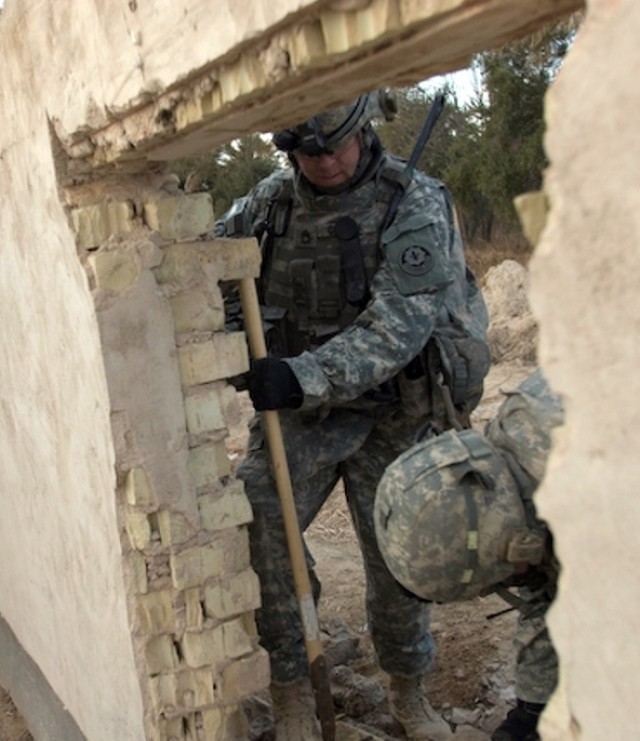
BAGHDAD, Iraq (Feb. 25, 2008) -- His call sign is "Big Dawg 17," but you might as well call him "Bloodhound 17" after Sgt. 1st Class Shawn Connell and his 30-man platoon sniffed out 16 buried ammunition and weapons caches over a 10-week period.
Connell has a reputation for being tough but fair. Currently in his fifth year as a platoon sergeant and his second tour in Iraq, Connell runs the 1st platoon of Battery B, Fires Squadron, 2nd Stryker Cavalry Regiment platoon one way -- his.
Connell barks orders like a drill sergeant.
"Take Bravo 17 (an up-armored Humvee) down to maintenance and get it fixed," he bellows. "It blew cherry juice all over Route Lincoln."
His Soldiers understand perfectly, and hurry to follow his guidance.
"The man is determined," said Spc. Ronald Butler. "I'll just leave it at that."
Connell's platoon assumed responsibility for an area northwest of Baghdad in what used to be an al-Qaida stronghold that was a prime spot for hidden munitions and homemade explosives.
After a few days of searching his platoon observed suspicious holes near an abandoned building. Four days later the Soldiers seized munitions from two finds. In the first seizure, they captured a 2.75-inch rocket, 450 AK-47 rifle rounds and 150 heavy machine gun rounds. At the second site, the nabbed four tank rounds.
By the time Christmas rolled around approximately two months later, the platoon had sniffed out 16 caches, including one on Christmas Day.
"I had to shell out $150 to buy the platoon pizza," said Connell. "I promised them if they found a cache on Christmas, they'd get pizza from me."
Fires Squadron Executive Officer Maj. Tim Hunt asked Connell why he and his platoon are so successful in finding illegal munitions and weapons. Connell replied with typical bluntness: "Sir, we just kick a lot of dirt."
Connell, an artilleryman by trade, enlisted with the National Guard in January 1987. Four years later, he joined the Army's active-duty ranks. He said he has spent the majority of his 21-year career behind cannons.
The war in Iraq changed all of that. His first deployment was in northern Iraq, he said, and most of his time was spent raiding houses looking for suspected terrorists -- a duty normally considered a job for infantrymen. His colleagues say that experience has served him well in his current tour.
"I'm amazed at how knowledgeable he is of the area," said Spc. Matthew Pawlikowski, the platoon's armorer.
The platoon's largest cache to date was found in early February, the day after a car bomb exploded under a local sheik. The platoon took immediate action after receiving a tip, and after two hours of searching Connell found six 120mm mortar rounds and a complete 120mm mortar system buried beneath a staircase.
Another hour of searching yielded the discovery of a buried water tank filled with more than 4,000 pounds of munitions, including rocket-propelled grenades, grenades, detonation cord and mortars.
After this deployment is over, Connell said he hopes to spend time with his newborn son and pursue an assignment with the Reserve Officer's Training Corps program at the University of Montana, so he can pass his knowledge to the Army's next batch of young second lieutenants and teach them "to kick a lot of dirt."
The 2nd SCR is a U.S. Army Europe unit headquartered in Vilseck, Germany.

Social Sharing